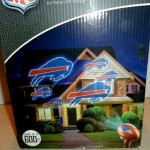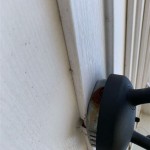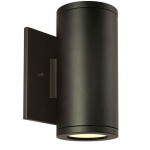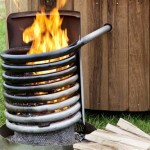How to Automate Outdoor Lights
Outdoor lighting can enhance the curb appeal of a home, improve safety, and create a welcoming ambiance. However, manually turning lights on and off can be inconvenient and time-consuming. Automating outdoor lights simplifies the process, offering convenience and energy efficiency. This article will explore the different methods to automate outdoor lighting, providing a detailed guide for homeowners.
1. Using Smart Bulbs
Smart bulbs are a popular option for automating outdoor lighting. These bulbs connect to a home's Wi-Fi network, allowing users to control them remotely using a smartphone app. Many smart bulbs offer features such as dimming, color changing, and scheduling. Compatibility with voice assistants like Amazon Alexa or Google Assistant further enhances convenience. When choosing smart bulbs for outdoor use, it is essential to ensure they are weatherproof and suitable for the specific type of fixture.
There are various brands of smart bulbs available, including Philips Hue, LIFX, and GE Cync. Each brand offers unique features and compatibility with different ecosystems. Researching and comparing different brands will help homeowners choose the best option based on their needs and preferences. Smart bulbs require an existing electrical outlet and may involve replacing the existing bulb with a compatible smart bulb.
2. Smart Switches and Outlets
Smart switches and outlets provide another convenient way to automate outdoor lighting. These devices replace existing switches and outlets, allowing users to control connected lights remotely using a smartphone app or voice commands. Smart switches and outlets often offer features like scheduling, dimming, and integration with other smart home devices. Homeowners can choose from single-pole or multi-pole smart switches depending on their wiring configuration.
Brands like Lutron, Leviton, and Hubspace offer a wide range of smart switches and outlets. When selecting a device, homeowners should consider factors like compatibility, features, and installation complexity. Smart switches and outlets require existing wiring and may involve replacing the existing switch or outlet.
3. Motion Sensors
Motion sensors are a common method for automating outdoor lighting. These sensors detect movement and activate connected lights automatically. Motion sensors are often used for security purposes, illuminating areas when motion is detected, deterring potential intruders. They are also useful for enhancing safety and visibility in walkways and driveways.
Motion sensors are available in various configurations, including passive infrared (PIR) sensors, ultrasonic sensors, and microwave sensors. Each type has its own strengths and weaknesses, and the best option depends on the specific application. Motion sensors are typically installed near the area to be monitored and should be positioned to avoid false triggering.
4. Photocell Sensors
Photocell sensors, also known as light sensors, automatically turn lights on at dusk and off at dawn. These sensors detect changes in light intensity and trigger connected lights accordingly. Photocell sensors are particularly useful for illuminating walkways, driveways, and other areas that require lighting during the night. They offer convenience and energy efficiency by automatically turning lights on and off based on ambient light conditions.
Photocell sensors are often integrated into outdoor fixtures or available as separate units. They are typically installed on the exterior of a home, facing the sky to detect changes in light levels. When installing photocell sensors, homeowners should ensure proper placement to avoid obstructions that may interfere with their operation.
5. Timer Switches
Timer switches offer a simple and affordable way to automate outdoor lighting. These switches operate on a pre-set schedule, turning lights on and off at designated times. Timer switches are ideal for creating a consistent lighting routine, such as turning lights on at dusk and off at a specific time in the evening. They are available in various configurations, including mechanical timers, digital timers, and programmable timers.
Timer switches are typically installed in an electrical box and connected to the light fixture. They are often used for ornamental lighting, decorative landscaping features, and other applications where consistent lighting schedules are desired. When using timer switches, homeowners should consider the desired lighting schedule and adjust the settings accordingly.
6. Integration with Smart Home Systems
Many automated outdoor lighting solutions can be integrated with existing smart home systems. This integration allows users to control their outdoor lights seamlessly alongside other smart home devices. Homeowners can use a central hub or app to manage all their smart home functions, including outdoor lighting. This integration can simplify control, enhance convenience, and enable automation based on specific triggers or scenarios.
Popular smart home platforms like Amazon Alexa, Google Home, Samsung SmartThings, and Apple HomeKit offer compatibility with various smart lighting solutions. Homeowners can explore different platforms and choose the one that best suits their existing ecosystem and preferences. Integration with smart home systems can enhance the functionality and convenience of automating outdoor lighting.

Automated Outdoor Lighting Dusk To Dawn Or Scheduled

How To Automate Your Outdoor Lights For 10 Dollars

How To Automate Outdoor Lights Without Changing Bulbs Using Smartthings

How To Automate Outdoor Lighting With Ajax Systems Support

4 Smart Outdoor Lighting Ideas To Automate Your Garden My Dream Haus

Turn Your Outdoor Lights On Off Automatically

The 3 Best Smart Outdoor Lights For Backyards Of 2024 Reviews By Wirecutter

The 3 Best Smart Outdoor Lights For Backyards Of 2024 Reviews By Wirecutter

How To Put Outdoor Lights On A Timer Electronicshub

3 Remarkably Easy Solutions For An Automatic Porch Light Timer
Related Posts







